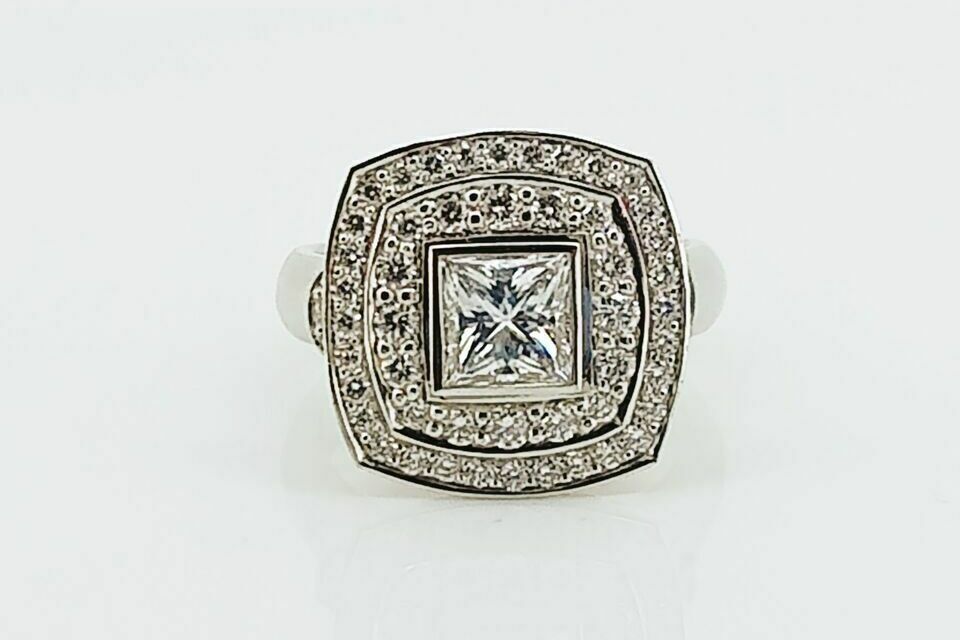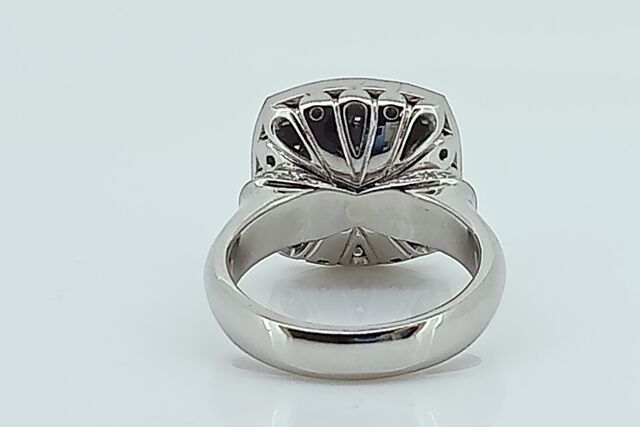Princess Cut Diamond Ring 1.77ct
These brilliant cut diamonds bring the total diamond weight of this ring to an impressive 1.77ct.
or four payments of $2562.50
with ![]() Learn More
Learn More
Size Chart
At Crawford Hill Jewellery we use the inside diameter to measure ring size, which is the distance across the centre of the ring between its two inner edges (see image). You can determine your ring size by measuring the inside diameter of a ring you have at home. Then use the conversion table below to see what letter/ring size you are and choose that letter on the website when purchasing a ring. Alternatively, if your ring size isn’t available on our website or you are unsure about sizing you can contact us for any additional help or information. The ring size table below can be used to obtain the corresponding ring size for a certain inside diameter or to convert between US/Canada and British/New Zealand/Australia ring sizes. Please make sure you order the correct size, if you choose the wrong size and need resizing there is a $65 charge which includes resizing and courier. If you are still unsure about your correct size please email us info@crawfordhill.co.nz and we are happy to help.How To Find Your Ring Size

Ring Size Conversion Table
UK, Australia, NZ Ring Size
Inside Diameter (mm)
US & Canada Ring Size
A
12
1/2
A 1/2
12.2
3/4
B
12.4
1
B 1/2
12.6
1 1/4
C
12.8
1 1/2
C 1/2
13
1 3/4
D
13.2
2
D 1/2
13.4
2 1/4
E
13.6
2 1/2
E 1/2
13.8
2 3/4
F
14.1
3
F 1/2
14.2
3 1/8
G
14.4
3 3/8
G 1/2
14.6
3 5/8
H
14.7
3 3/4
H 1/2
14.9
4
I
15
4 1/4
I 1/2
15.3
4 1/2
J
15.4
4 5/8
J 1/2
15.7
5
K
15.8
5 1/8
K 1/2
16
5 3/8
L
16.1
5 1/2
L 1/2
16.4
5 7/8
M
16.5
6
M 1/2
16.7
6 1/4
N
16.9
6 1/2
N 1/2
17.1
6 3/4
O
17.4
7
O 1/2
17.5
7 1/4
P
17.8
7 1/2
Q 18.2 8 Q 1/2
18.4
8 1/4
R
18.6
8 5/8
R 1/2
18.8
8 7/8
S
19.1
9 1/8
S 1/2
19.3
9 3/8
T
19.5
9 5/8
T 1/2
19.8
10
U
20
10 1/4
U 1/2
20.2
10 1/2
V
20.3
10 5/8
V 1/2
20.7
11
W
20.8
11 1/8
W 1/2
20.9
11 3/8
X
21.2
11 5/8
X 1/2
21.3
11 7/8
Y
21.5
12
Y 1/2
21.7
12 1/4
Z
21.9
12 1/2
Z + 1/2
22.1
12 3/4
Reviews
Associated Items
View your shopping basket or Browse other items in Instore Jewellery.






